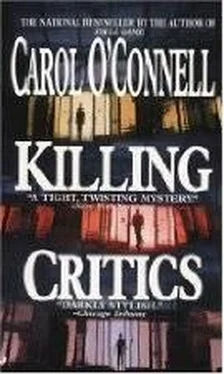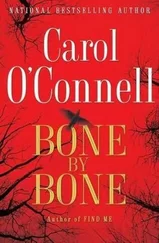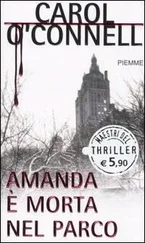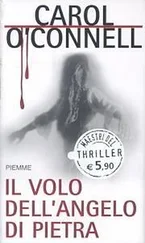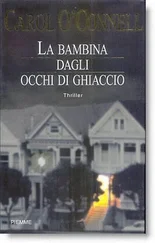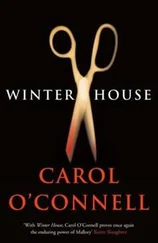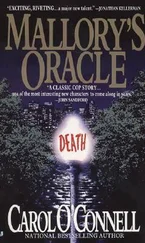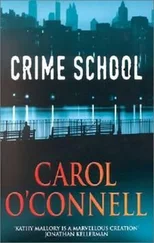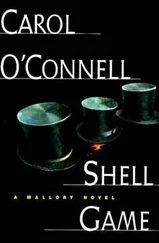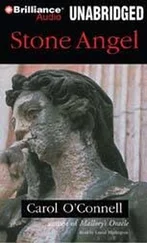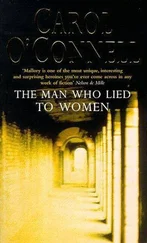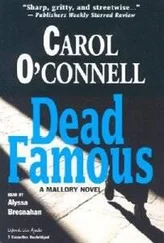Carol O’Connell - Killing Critics
Здесь есть возможность читать онлайн «Carol O’Connell - Killing Critics» весь текст электронной книги совершенно бесплатно (целиком полную версию без сокращений). В некоторых случаях можно слушать аудио, скачать через торрент в формате fb2 и присутствует краткое содержание. Жанр: Триллер, на английском языке. Описание произведения, (предисловие) а так же отзывы посетителей доступны на портале библиотеки ЛибКат.
- Название:Killing Critics
- Автор:
- Жанр:
- Год:неизвестен
- ISBN:нет данных
- Рейтинг книги:3 / 5. Голосов: 1
-
Избранное:Добавить в избранное
- Отзывы:
-
Ваша оценка:
- 60
- 1
- 2
- 3
- 4
- 5
Killing Critics: краткое содержание, описание и аннотация
Предлагаем к чтению аннотацию, описание, краткое содержание или предисловие (зависит от того, что написал сам автор книги «Killing Critics»). Если вы не нашли необходимую информацию о книге — напишите в комментариях, мы постараемся отыскать её.
Killing Critics — читать онлайн бесплатно полную книгу (весь текст) целиком
Ниже представлен текст книги, разбитый по страницам. Система сохранения места последней прочитанной страницы, позволяет с удобством читать онлайн бесплатно книгу «Killing Critics», без необходимости каждый раз заново искать на чём Вы остановились. Поставьте закладку, и сможете в любой момент перейти на страницу, на которой закончили чтение.
Интервал:
Закладка:
“So Madame Burnstien, you knew Aubry’s mother well?”
“Very good, my dear. That’s a portrait of Aubry.”
There was someone dancing in the painting. Although the subject was abstracted, there was a figure there, ephemeral, shimmering, flying over a wide space. Action strokes gave it life, and the space surrounding it pulsed with color. Fuchsia juxtaposed with brilliant greens and vied for the foreground to create a depth of field that confounded all laws defining the flat planes of canvases. Flourishes and dabs of paint had the rhythm and the punctuation of music. Mallory turned away with the afterimage of a full ballet and even its score.
“Do you know what happened to Sabra?”
The old woman sat down and averted her eyes. “Has there been an accident?” One gnarled hand went to her breast.
“Not that I know of. She disappeared years ago. Do you know where she went after she left the asylum?”
“No.”
This was the simple truth. There was no pause, no telling sign of a new furrow in the old woman’s face, or a nervous shift in her body. And there was no hint of a question or a surprise in her eyes. So she was close enough to the family to have known about Sabra’s asylum years.
“You were at the funeral. I saw you in the old photographs. What was Sabra like that day? Was she already crazy?”
The old woman shook her head. Frowning, she waved her hand as if to chase away the words. Mallory came closer and leaned down to meet Madame’s eyes. “Maybe I should have asked if you’d seen Sabra recently.”
Madame Burnstien said nothing. But that was something. There was no convenient, polite lie to fill the gap. This woman might be capable of deception, but the outright lie was not Madame’s style. So Sabra was alive. She backed off now, to give the woman space.
“All right, then tell me about Aubry and the artist she died with. Was Peter Ariel really her boyfriend? Or was there someone else?”
“She had no lovers.”
“She was a very attractive woman, and these days, twenty is old for a virgin.”
“The world changed, the ballet did not. It’s a grueling, demanding profession. Aubry had great ambition. She had no time for friends or lovers. This is what she loved.” Madame Burnstien pointed to a large photograph of a dancer’s ruined feet, half-healed sores and open wounds, all the punishment of the cruel shoes. “When Aubry was not performing in her ballet company, she was here, taking classes. The classes never end, you know, not for your entire life span as a ballerina.”
“She had some connection to that gallery she died in. There was something going on in her life. She could have been meeting her boyfriend in the hours after the lessons and performances.”
“No, she couldn’t!” The cane beat the floor with a thud and left a round impression in the rug. There were many such impressions about the room.
“You can’t know that, not for sure.” Mallory leaned back against the red door. “You weren’t with her every minute.” Her words were taunting, to lead the old woman into the fray. She had learned a great deal from the rabbi. “You were only her teacher. She could have had a hundred boyfriends.”
And now the old woman sat up a little straighter, head lifting, rising to the bait. “Aubry could not have been carrying on an affair, not without my knowing. Dancing takes tremendous strength, great care with one’s health. I myself was overtrained. My arthritis began when I was only a little older than Aubry. A dancer needs rest above all things. Aubry retired as early as her evening performances would permit, and she was here every morning taking class. There were no late-hour bruises to her eyes. Aubry only danced!” Lower and less emphatic now, “She never had a life.”
Mallory folded her arms in the skeptic’s pose which the rabbi used when he thought she might be lying.
Madame Burnstien rose from her chair. The pain of movement was concealed well, but not completely. There was evidence enough for Mallory to know the arthritis had taken over the entire body of this former prima ballerina.
The old woman stood by the window, her back turned to Mallory when she spoke. “You saw all the children downstairs? Out of the hundred, perhaps one will make it, perhaps not. And all the children who are not chosen- I like to think they have escaped.”
Mallory moved behind her, coming upon her so quietly that the old woman started at her first words. “According to the newspapers, Aubry and the artist had an affair. An art critic named Andrew Bliss said-”
“A pack of lies.”
“People who knew them both were quoted-”
“All lies!”
“Or maybe you’re lying to me now.” But she knew that Madame Burnstien was not. When the old woman spoke next there was no confrontation, no defense, only the simple facts of Aubry’s time on earth.
“She only danced. She never really lived. And then she died.”
“More blackmail, Mallory?” Edward Slope made two notations on a chart and set it down on the table by the gutted male cadaver and former taxpayer. “What do you want now, the pink slip on my car?”
He pulled off his gloves and slapped them down on the body which had done nothing to offend him. She held her ground. No emotion whatsoever, and that never failed to disturb him. He suspected this was her method of getting a rise out of him, forcing him to fill the emotional void from his own store of frustration.
“Just a few questions,” she said. “Did Markowitz ever ask you how much time it would take to cut up the two bodies?”
How in hell did she know that? He turned away from her as he pulled off the bloody surgical gown. “Yes, he did ask. But I was angry with him. I told him to buy a leg of beef and figure it out for himself.”
“That’s just what he did.” She pulled a yellow napkin out of her pocket. “It took him a long time to cut through that leg. That gave him a lot of trouble with the time frame of the murder. It looks like there had to be more than one person working on the bodies. I think that was another reason he wouldn’t close out the case, another thing that wouldn’t fit.”
He took the napkin from her hand and read the log of cutting meat and bone. “Poor bastard. I could have helped him with that. But you were right, we weren’t speaking then.” He handed the napkin back to her. “The killer worked the limbs at the joint. Easier that way, though I couldn’t tell you how much time was saved.”
“Can you think of anything else that might help?”
“I suppose you could say the joint cuts were an oddity, and I should have told him that, too. In most dismemberment cases, the fool takes the leg off at the bottom of the torso, not the hip joint-cuts through the bone when he doesn’t have to. The bones at the joints weren’t cut, but I did report the damage from the axe. He might have misread that. And I suppose I misled him with that leg of beef.”
“So would the joint cuts indicate some knowledge of anatomy? Like art school anatomy?”
“It might.”
“Oren Watt never went to art school.”
Slope thought she delivered that line with entirely too much smugness. He could fix that. “It might also indicate that the killer had simply carved his share of Thanksgiving turkeys. Nobody cuts the bone of the drumstick. But Helen always served a roast for Thanksgiving, didn’t she? So I can understand how that one got by you. But you’re so stubborn. I have to worry about what else you might be missing. You just can’t admit that Oren Watt could’ve-”
“One more question,” she said. “Why did you back up Quinn? You told him Aubry was the most likely target.”
“Yes, I did. I also told him I thought Oren Watt was the most likely suspect. I still believe that little bastard did it. Why must you go back into that case again?”
Читать дальшеИнтервал:
Закладка:
Похожие книги на «Killing Critics»
Представляем Вашему вниманию похожие книги на «Killing Critics» списком для выбора. Мы отобрали схожую по названию и смыслу литературу в надежде предоставить читателям больше вариантов отыскать новые, интересные, ещё непрочитанные произведения.
Обсуждение, отзывы о книге «Killing Critics» и просто собственные мнения читателей. Оставьте ваши комментарии, напишите, что Вы думаете о произведении, его смысле или главных героях. Укажите что конкретно понравилось, а что нет, и почему Вы так считаете.
